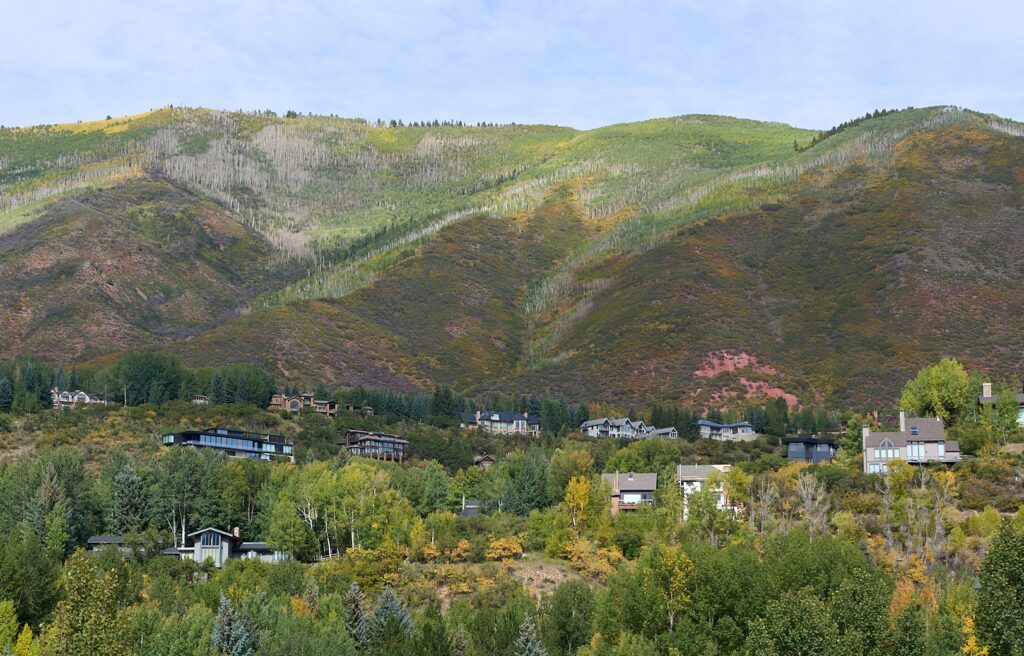Roaring Fork Valley Phenology | July 22, 2013
ACES Staff
July 22, 2013

You may know how to identify the “flat, friendly, fragrant” fir, but have you seen their cones? Pictured here are maturing subalpine fir (Abies lasiocarpa) cones taken July 18 on Aspen Mountain. Fir cones are rarely seen because after they mature, the scales and seeds fall apart while high on the tree. This is unlike typical spruce and pine cones that fall off the tree intact. The only time we see fir cones on the ground is when they have been snipped off the tree by squirrels who stash them for winter.
This year has been a top year for flowers and berries of all kinds. The same is true for conifer cones which is why even small tress like this one are producing cones. Why? According to Woodward in his 1994 paper entitled “Influence of Climate on Radial Growth and Cone Production in Subalpine Fir and Mountain Hemlock”: “Several studies of conifers show that large cone crops occur 2 years after a cool cloudy summer, 18 months after a cold winter and 1 year following a hot dry summer. “ It is interesting to me how much of what we see today is a result of past season’s weather. What will this summer be known for? It has been very hot and dry so far…monsoon soon?
~ Jim Kravitz, Director of Naturalist Programs
Related Content

RFV Phenology: Green is out, yellow is in! Or is it?
Learn More
ACES // City of Aspen Open Space Birding: Marolt Open Space 9/5/2024
Learn More